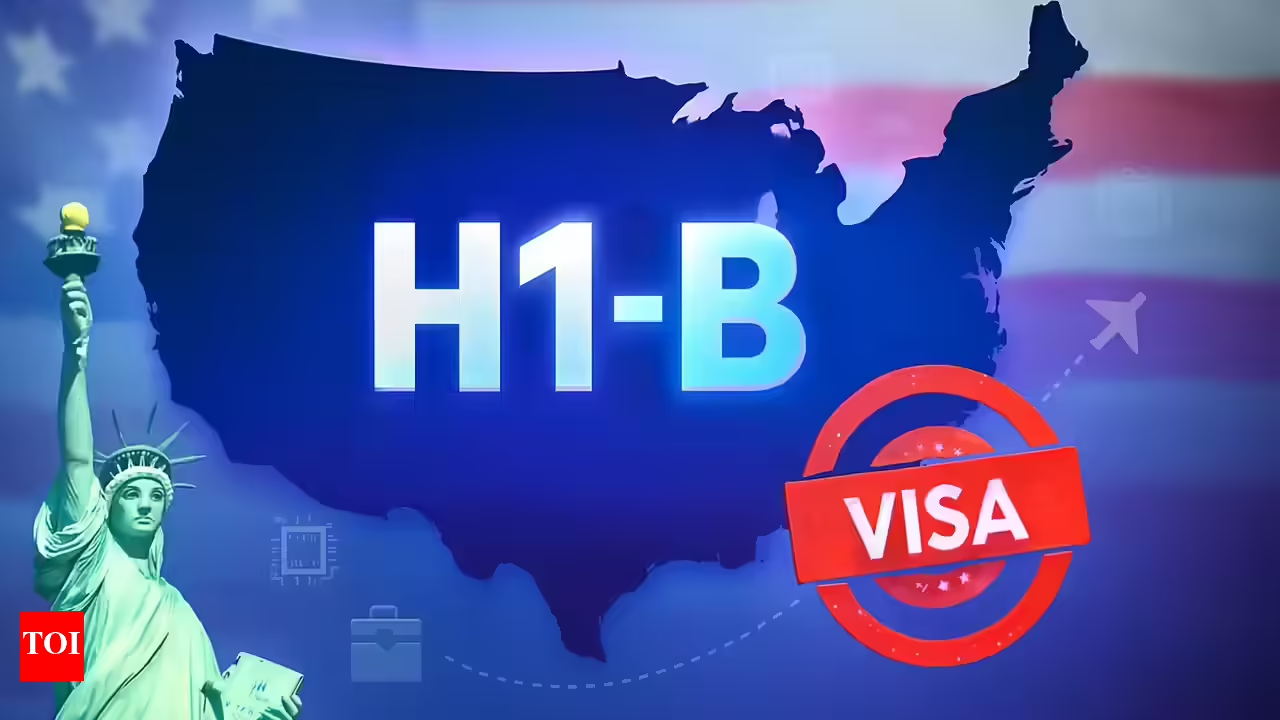Delhi : The recent changes in America’s H-1B visa policy have sparked both concern and opportunity across the globe. While the Indian diaspora faces fresh uncertainty, the development could turn into a historic advantage for India’s self-reliance mission if addressed with foresight.
The U.S. government has proposed a hefty fee of USD 100,000 on new H-1B applications, marking a major shift in its immigration approach. For decades, H-1B visas have been a backbone for American tech giants such as Google, Microsoft, and Amazon, with nearly 70% of recipients being Indian professionals. However, growing protectionist trends and economic nationalism are now shaping the U.S. job market.
The move signals more than just a visa policy shift—it reflects a recalibration of global economic power equations. While the U.S. is attempting to reduce dependence on foreign talent under domestic political pressure, other nations like Canada, the UK, and Australia are liberalising their immigration policies, thus redrawing the map of global talent competition.
For Indian professionals in the U.S., the impact is deeply personal. Families face job insecurity, uncertainty in children’s education, and questions over long-term stability. Yet for India, this development opens a window of opportunity. The prospect of large numbers of skilled professionals returning home brings the promise of a “reverse brain drain.” These returnees carry not only capital but also global expertise, international networks, and entrepreneurial vision.
Such a transition could inject fresh momentum into India’s start-up ecosystem and boost its unicorn landscape. Experienced professionals with investor outlooks and global exposure can create a stronger entrepreneurship culture at home. Their expertise also offers immense value to India’s research and development sector, particularly in cutting-edge fields like artificial intelligence, biotechnology, quantum computing, and semiconductors. By harnessing their capabilities, India could accelerate innovation and strengthen initiatives such as Digital India, Make in India, and Atmanirbhar Bharat.

To maximise this moment, the Indian government needs proactive measures. Tailored policies such as a “Returning Talent Scheme” offering tax breaks, start-up incentives, and investment support could encourage professionals to reintegrate smoothly. Strengthening collaborations between universities, industries, and research labs will be crucial to utilising this talent pool effectively. Similarly, incentivising private R&D investments and linking venture capital funds with returning professionals could energise the financial ecosystem.
Equally important are social rehabilitation measures for returnees and their families. Ensuring access to education, healthcare, and housing would make resettlement smoother, allowing them to contribute fully to India’s socio-economic growth.
Ultimately, the H-1B controversy presents a dual reality: a crisis for the diaspora and an opening for India. If seized wisely, this reverse brain drain could become a cornerstone for India’s self-reliance, reshaping its role in the global value chain. The message is clear—true Atmanirbharta requires not just slogans but visionary policies and the ability to convert global challenges into opportunities.





